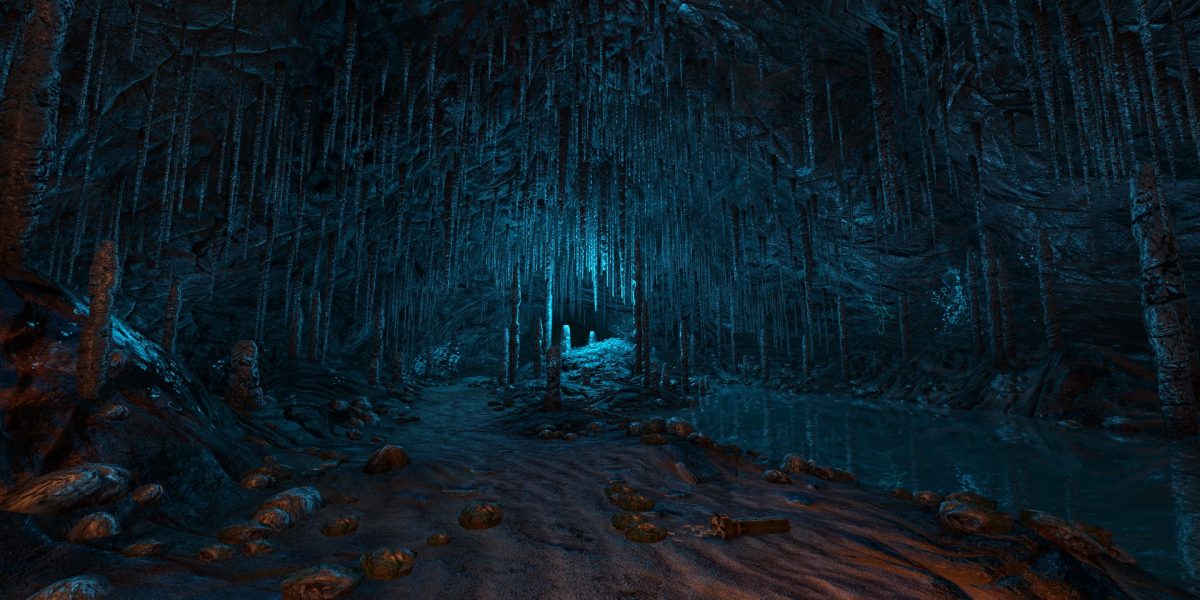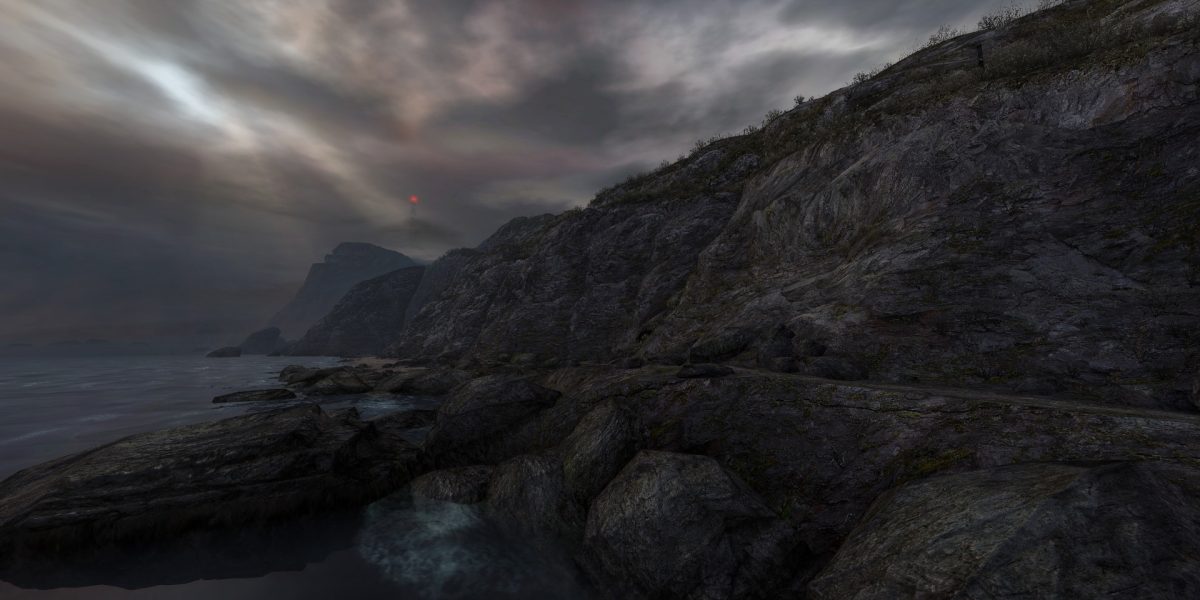There must be a hole in the bottom of the boat. How else could new hermits have arrived?
Dear Esther Review
Letters to the Deceased
Deep within the Scottish archipelago sits the Herbrides. It is here that we, the player, finds ourself on a deserted island. Here you are tasked with exploring the island. While doing so letter fragments are read to you written from an anonymous man to his deceased wife Esther. Whenever visiting a new location on the island a new letter fragment is read to you. If you so choose to replay the game after ‘beating’ it, you are welcome to a slightly new narrative in each playthrough.
When travelling through the Herbrides island the unknown letter reader talks about other people who once visited the island: Donnelly, a man who once charted the island. Paul, who might have been a drunk driver that collided with Esther resulting in her death. Jacobson, a shepherd who used to live on the island in the 18th century. When exploring the island the player will find different landmarks such as a shipwreck, a special gave with diagrams written on the walls and different falling-apart buildings. At different times on the island the player may encounter another person in the distance who the player can never catch up to. Throughout the game the player is told more and more information on the characters, and their stories become more and more blurred so any conclusion as to what is really going on must be drawn by the player.
Boring Beauty
The gameplay in Dear Esther is severily limited. All you can do is wander around, listening to the narration and looking at the landscape. And what a landscape it is. The absolutely strongest point in Dear Esther is the graphics. The game is downright beautiful. The portrayal of nature is sublime making walking around, exploring every nook and corner a treat. The narration is pretty well done, and the story is sort of interesting. There are no puzzles, nothing really to interact with so the game serves more as an art piece than an actual game.
Music in the game is alright. It is composed by Jessica Curry, who didn’t have much experience with video games before taking on the project. That is not to discredit her, as she took the challenge and dived into understanding the medium and to create a soundtrack that would fit. The score is classical music, quite relaxing and somber. It fits the game and it’s atmosphere.
Dear Esther is a walking simulator true to it’s genre. You do nothing but walk and listen. That might throw some people off but the beautiful rendition of nature is a significant plus for the title. It might be a bit boring at times, but if you can stomach through it, it is a nice, short title – and among the more famous walking simulator games from back when the idea of this genre still was quite new. Atleast, if for no other reason, it is worth playing just to travel through the scenery and enjoying a peaceful, relaxing game with a hint of a mystery tagged on.



